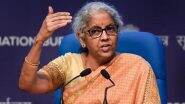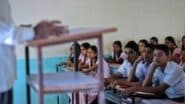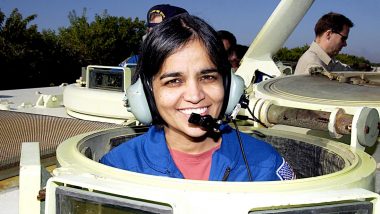Washington [US], September 9: Northrop Grumman has named its next space station resupply ship after Dr Kalpana Chawla, an astronaut of India decent.
The "S.S. Kalpana Chawla," Northrop Grumman's next Cygnus spacecraft to launch to the International Space Station, is christened in honor of the Columbia astronaut, company officials announced on Tuesday (September 8)
"Northrop Grumman is proud to name the NG-14 Cygnus spacecraft after former astronaut Kalpana Chawla. It is the company's tradition to name each Cygnus after an individual who has played a pivotal role in human spaceflight.
Chawla was selected in honor of her prominent place in history as the first woman of Indian descent to go to space," Northrop Grumman said in a statement.
Also Read | US Imposes Sanctions on 2 Ex-Lebanese Ministers, Yusuf Finyanus and Ali Hassan Khalil, For Hezbollah Ties.
"Today we honor Kalpana Chawla, who made history at NASA as the first female astronaut of Indian descent. Her contributions to human spaceflight have had a lasting impact. Meet our next Cygnus vehicle, the S.S. Kalpana Chawla," the aerospace and defense technology company tweeted.
Northrop Grumman, NASA's resupply contractor further added, "Liftoff is targeted for September 29 from NASA's Wallops Flight Facility."
The Cygnus spacecraft will deliver approximately 3,629 kg (8,000lb.) of cargo to the space station. The S.S. Kalpana Chawla will be launched into orbit from Virginia Space's Mid-Atlantic Regional Spaceport (MARS) Wallops Island, Virginia.
Northrop Grumman will load critical cargo into S.S. Kalpana Chawla (Cygnus spacecraft), 24 hours before the scheduled launch. Upon arrival at the International Space Station, the cargo will be unloaded from Cygnus. Once the spacecraft departs the station, S.S. Kalpana Chawla will host the Spacecraft Fire Experiment -V (Saffire-V) to study the behavior of large-scale fires in microgravity after which it will perform a safe, destructive reentry into Earth's atmosphere over the Pacific Ocean.
Kalpana Chawla, the spacecraft's namesake, the path to becoming an astronaut began in Karnal, India. Chawla -- known to her friends as "K.C." -- knew that she wanted to be an aerospace engineer at an early age. She was influenced by watching the planes from the local flying clubs and by her father.
"Every once in a while," Chawla said, "we'd ask my dad if we could get a ride in one of these planes. And, he did take us to the flying club and get us a ride in the Pushpak and a glider that the flying club had," the fallen astronaut often said in interviews.
She graduated from Tagore School, Karnal, India, in 1976 and received a bachelor's degree in aeronautical engineering from India's Punjab Engineering College in 1982.
Then, she moved to the United States to go to graduate school at the University of Texas-Arlington, where she received a master's degree in aerospace engineering in 1984. Then, she moved to Boulder, Colo., to pursue a doctorate in aerospace engineering, which she received in 1988.
Her career with NASA began in 1988 when she went to work for the Ames Research Center in California. Chawla's work at Ames centered on powered-lift computational fluid dynamics, which involves aircraft like the Harrier.
After a brief career outside NASA, she returned as an astronaut candidate in December 1994. Her first flight was STS-87, the fourth U.S Microgravity Payload flight, on Space Shuttle Columbia from Nov. 19 to Dec. 5, 1997. She returned to space on Jan. 16, 2003, aboard Columbia for a 16-day research flight. The STS-107 crew conducted more than 80 experiments.
Chawla and her six STS-107 crewmates perished Feb. 1, 2003, over Texas as Columbia was re-entering Earth's atmosphere.
(The above story is verified and authored by ANI staff, ANI is South Asia's leading multimedia news agency with over 100 bureaus in India, South Asia and across the globe. ANI brings the latest news on Politics and Current Affairs in India & around the World, Sports, Health, Fitness, Entertainment, & News. The views appearing in the above post do not reflect the opinions of LatestLY)













 Quickly
Quickly











